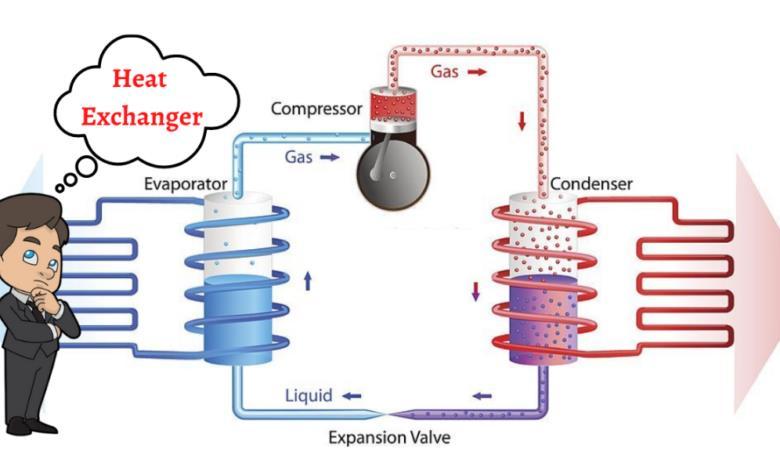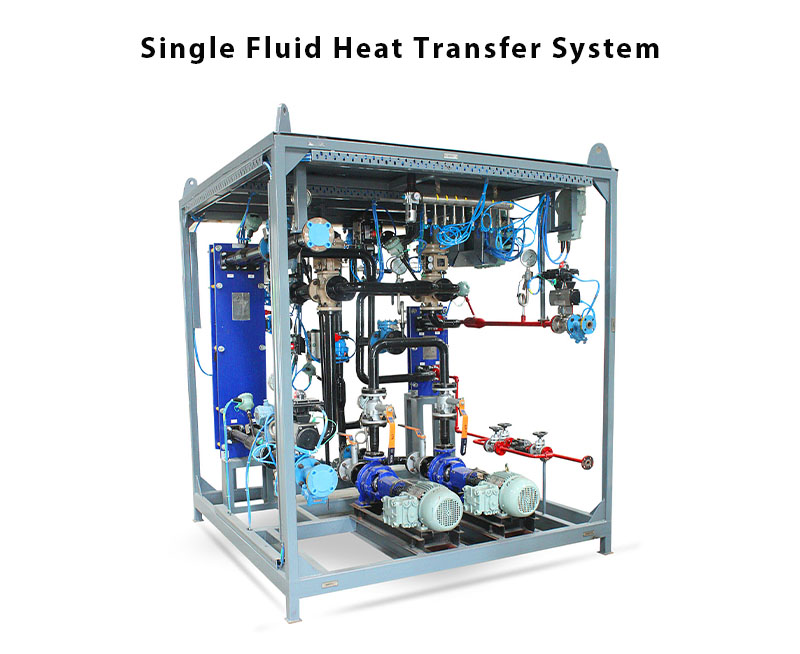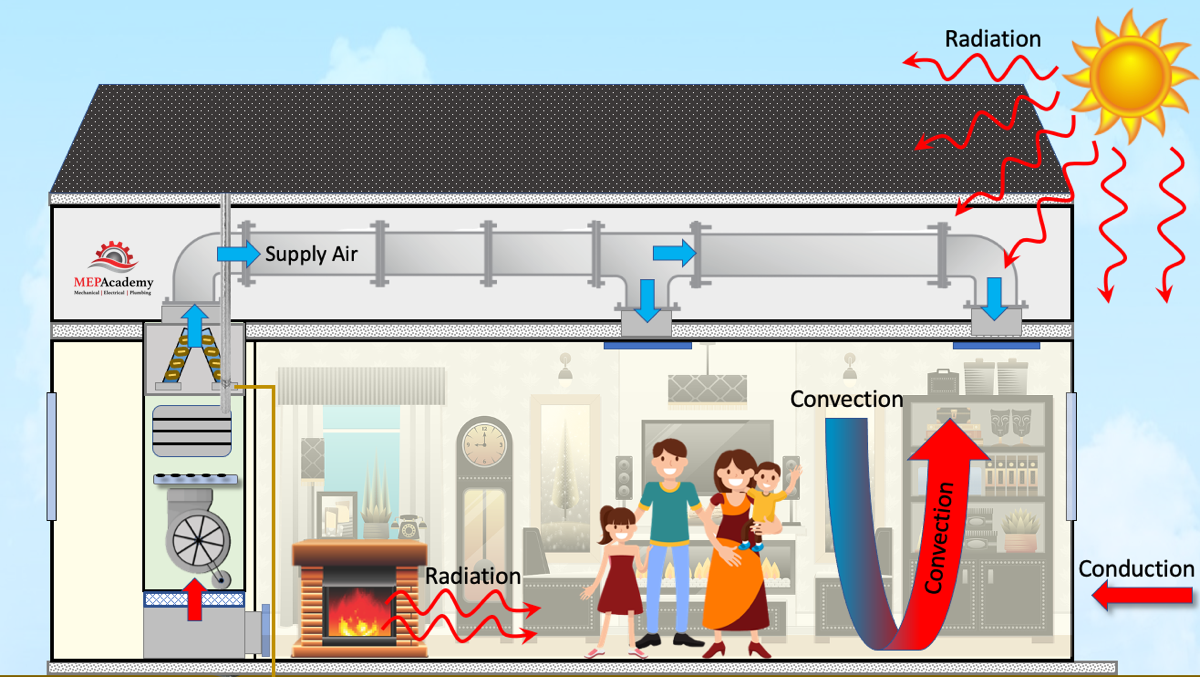How DVS Heat Transfer Systems Harness Next-Gen Fluids to Enhance Thermal Conductivity
Wiki Article
A Comprehensive Overview to Picking the Right Heat Transfer Solutions for Your Requirements
Picking the appropriate Heat transfer system is important for operational performance. Numerous systems satisfy different requirements, influenced by variables such as temperature level variety and liquid kind. Comprehending the concepts behind Heat transfer, such as radiation, convection, and transmission, is essential. Furthermore, reviewing power resources and upkeep practices can influence long-lasting efficiency. A closer assessment of these factors to consider reveals just how to tailor a system to specific needs. What should one prioritize in this complicated decision-making procedure?Understanding Heat Transfer: Trick Principles and Principles
Heat transfer may appear like an uncomplicated concept, it encompasses a range of principles that are essential for reliable system layout - DVS Heat Transfer Systems. Understanding these concepts is essential for developers and engineers who aim to optimize thermal efficiency in different applications. Conduction, for circumstances, entails the transfer of Heat through solid products, while convection refers to the activity of Heat within liquids. Radiation, an additional vital concept, describes exactly how Heat can be transferred through electromagnetic waves. Each of these systems plays a crucial function in determining how power moves within a system. By thoroughly understanding these ideas, experts can make enlightened choices, making certain that Heat transfer systems operate successfully and fulfill the specific demands of their applications
Sorts Of Heat Transfer Equipments: A Summary
Comprehending the concepts of Heat transfer lays the groundwork for exploring the different sorts of Heat transfer systems available. Heat transfer systems can be categorized mostly right into 3 kinds: radiation, convection, and transmission. Transmission involves Heat transfer with solid materials, counting on direct contact between fragments. Convection, on the various other hand, occurs in fluids (gases and fluids) where the movement of the liquid itself promotes Heat transfer. Radiation involves the transfer of Heat through electro-magnetic waves and does not need a medium, allowing it to happen in a vacuum. Each kind of system has unique attributes and applications, making it vital for people and organizations to carefully assess their certain requirements when picking the most appropriate Heat transfer remedy.Applications of Heat Transfer Solutions in Various Industries
Heat transfer systems play a crucial function throughout different industries, affecting effectiveness and item top quality. In industrial production procedures, they promote accurate temperature level control, while in food and drink handling, they guarantee safety and conservation. Additionally, cooling and heating and climate control systems depend heavily on reliable Heat transfer to preserve comfy environments.Industrial Production Processes

Many commercial manufacturing procedures rely heavily on effective Heat transfer systems to make the most of performance and boost product high quality. In sectors such as metalworking, Heat exchangers play a vital duty in keeping optimal temperatures throughout welding, spreading, and building. These systems guarantee consistent Heat distribution, which is essential for achieving desired product residential properties. In the chemical production industry, Heat transfer systems assist in precise temperature control during reactions, influencing yield and safety. In fabric production, efficient Heat management is crucial for dyeing and finishing procedures, influencing shade uniformity and material quality. By picking proper Heat transfer modern technologies, producers can enhance power effectiveness and minimize functional costs, ultimately causing a much more competitive and lasting manufacturing atmosphere.
Food and Drink Processing
Reliable Heat transfer systems are similarly important in the food and drink handling sector, where keeping suitable temperature levels is vital for food safety and security and quality. These systems play a vital role in procedures such as pasteurization, cooking, and sterilization, guaranteeing that products are secure for usage and keep their dietary value. Heat exchangers, for example, efficiently move Heat in between liquids, optimizing energy usage while lessening temperature fluctuations. Additionally, refrigeration systems are basic for expanding and maintaining perishable things service life. The selection of Heat transfer innovation straight affects functional performance and product integrity, making it important for food and drink makers to pick the suitable systems customized to their particular processing demands. This cautious choice inevitably adds to consumer satisfaction and food safety.
Heating And Cooling and Climate Control
While lots of industries depend on Heat transfer systems discover this for efficiency, HVAC (Heating, Ventilation, and A/c) plays an important duty in preserving interior climate control across different settings. These systems utilize Heat transfer concepts to control moisture, air, and temperature level top quality, making certain comfort and security in domestic, commercial, and commercial atmospheres. Correctly designed heating and cooling systems boost power performance, reduce operational expenses, and reduce ecological influence. In commercial buildings, as an example, reliable climate control contributes to staff member productivity and client complete satisfaction. In industrial applications, heating and cooling systems assist keep suitable conditions for tools operation and product conservation. Selecting the best Heat transfer system is essential for conference details environment control needs and attaining total system performance.Reviewing Power Resources for Heat Transfer Systems
In examining power sources for Heat transfer systems, a comparison of sustainable energy options and nonrenewable fuel source considerations is crucial. Renewable resources, such as solar and wind, deal lasting options that can decrease environmental impact. Alternatively, nonrenewable fuel sources remain widespread because of their well-known framework and energy thickness, triggering a careful assessment of both options.Renewable Resource Options

Fossil Gas Factors To Consider
Reviewing fossil gas considerations is crucial for the effectiveness and sustainability of Heat transfer systems. Nonrenewable fuel sources, such as natural gas, oil, and coal, are see post traditional power resources that supply significant Heat output, making them preferred selections for industrial and household applications. Their environmental effect, consisting of greenhouse gas discharges and source deficiency, elevates worries. When choosing a warmth transfer system, it is important to evaluate the accessibility, price, and governing variables linked with these gas. Additionally, the effectiveness of nonrenewable fuel source systems need to be taken into consideration, why not check here as greater efficiency can mitigate some ecological disadvantages. Eventually, a balanced approach weighing performance and sustainability can assist decision-makers towards one of the most ideal Heat transfer option for their particular needs.Aspects to Take Into Consideration When Selecting a Heat Transfer System
Choosing an ideal Heat transfer system needs careful factor to consider of different variables that can considerably influence effectiveness and performance. One vital variable is the operating temperature range, which dictates the products and style appropriate for the application. In addition, the kind of liquid made use of in the system-- whether gas or liquid-- impacts Heat transfer performance and compatibility. The system's dimension and capacity have to straighten with the particular demands of the procedure to stay clear of ineffectiveness. Power source availability is likewise vital, affecting operating costs and sustainability. Furthermore, the installation setting, including room constraints and ease of access for upkeep, plays a significant function in system choice. Finally, regulatory compliance and safety standards should be considered to ensure the system fulfills all lawful requirements.Maintenance and Efficiency Optimization for Heat Transfer Solutions
Preserving Heat transfer systems is crucial for making sure maximum efficiency and longevity. Regular upkeep activities, such as cleaning up Heat exchangers and examining insulation, help prevent performance losses because of fouling and thermal bridging. Additionally, keeping track of system specifications, including stress and temperature level, enables for very early detection of anomalies, reducing downtime and expensive repair services. Implementing a preventive maintenance routine can maximize efficiency and extend the lifespan of elements. Upgrading to advanced control systems can enhance operational performance by changing to differing problems and lots. By focusing on upkeep and effectiveness optimization, drivers can achieve reduced power consumption, lower operational expenses, and enhanced overall system reliability, ultimately causing better resource use and a much more sustainable operation.Future Patterns in Heat Transfer Technologies
As markets increasingly prioritize sustainability and energy effectiveness, future trends in Heat transfer modern technologies are set to go through significant changes. Technologies such as advanced products, including carbon nanotubes and nanofluids, guarantee improved thermal conductivity and effectiveness. In addition, the combination of renewable resource sources into Heat transfer systems is obtaining momentum, advertising green remedies. Smart modern technologies, consisting of IoT sensors, are expected to revolutionize monitoring and control, allowing real-time information analysis for optimized efficiency. In addition, the advancement of small and modular systems will promote less complicated setup and maintenance, dealing with diverse applications. These advancements suggest a change towards more sustainable, efficient, and versatile Heat transfer remedies, aligning with international energy objectives and ecological requirements.
Regularly Asked Concerns
What Are the Environmental Effects of Heat Transfer Systems?
The ecological influences of Heat transfer systems can consist of greenhouse gas exhausts, power intake, and potential thermal contamination. Additionally, inappropriate disposal of materials and inefficiencies can add to source deficiency and community interruption.Just how Do I Calculate the Cost-Effectiveness of a Warmth Transfer System?
To calculate the cost-effectiveness of a heat transfer system, one should evaluate preliminary expenses, functional expenses, upkeep requirements, and power performance, comparing these elements versus the anticipated lifespan and efficiency of the system.Can Heat Transfer Equipment Be Utilized in Residential Setups?
Heat transfer systems can certainly be utilized in household setups. They give effective heating and cooling down options, making homes a lot more comfortable while potentially lowering power costs. Their adaptability enables various applications in domestic settings.What Safety Rules Put On Heat Transfer Equipments?
Security regulations for Heat transfer systems generally consist of standards on operation, upkeep, and setup. Compliance with regional building regulations, manufacturer requirements, and sector criteria is essential to assure effective and safe system efficiency in numerous applications.How Do Various Products Affect Heat Transfer Effectiveness?

Transmission, for instance, includes the transfer of Heat with strong products, while convection refers to the activity of Heat within liquids. Understanding the principles of Heat transfer lays the groundwork for exploring the various types of Heat transfer systems available. Heat exchangers, for circumstances, successfully transfer Heat between liquids, maximizing power use while reducing temperature fluctuations. In assessing energy resources for Heat transfer systems, a contrast of eco-friendly power options and fossil gas factors to consider is important. Steels, such as copper and light weight aluminum, conduct Heat effectively, whereas insulators like rubber and glass slow down Heat circulation.
Report this wiki page